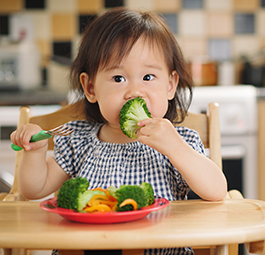Food Allergens

Most Common Food Allergens
Nine foods cause most food allergy reactions in the United States. They are:
- Milk
- Eggs
- Peanuts
- Tree nuts (examples: almonds, walnuts, pecans)
- Sesame
- Soy
- Wheat
- Fish (examples: bass, flounder, cod)
- Crustacean shellfish (examples: crab, lobster, shrimp)
Use our guides for the major food allergens above to help you manage your allergy.
How Can I Prevent Allergic Reactions?
There is no cure for food allergies. To prevent allergic reactions, your child needs to avoid their food allergens. You can help them avoid food allergens by:
- Reading every food label, every time
- Preventing cross-contact – when a food allergen comes in contact with food or an item not intended to contain that allergen
The Food and Drug Administration (FDA) has special rules for the most common food allergens. Food allergen label laws require labels to state if they contain any of the major food allergens listed above. Foods that contain these allergens must say so.
But there are many foods and products that are not covered by the law, so they don’t have to list food allergens on their labels. Items that may contain food allergens include:
- Foods that are not regulated by the FDA (milk, eggs, meat, and poultry)
- Cosmetics and personal care products
- Prescription and over-the-counter medicines
- Pet food, toys, and crafts
It is possible to successfully manage your child’s food allergy with resources, advocacy, and support. Join the Kids with Food Allergies community to get the latest food allergy news and resources, learn about advocacy efforts, and connect with other people managing food allergies.
JOIN NOW
Medical Review: December 2022 by Michael Pistiner, MD, MMSc

















